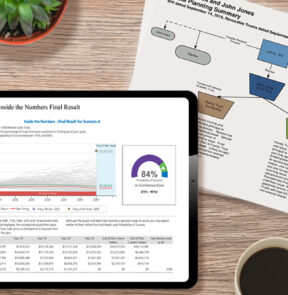Serving on an endowment or foundation investment committee is an important role, bringing with it a specific set of fiduciary responsibilities to the organization being served. Therefore, it is vital that appropriate care be taken when selecting and monitoring an investment advisor. We find that investment committee members often have varying levels of expertise in this process. To assist, we have compiled some key areas of consideration (below) and a list of representative Request for Proposal (RFP) questions you may want to use (available upon request).
Note that in many cases below there are advantages and disadvantages of each option discussed, and the goal of this paper is to offer readers helpful context to inform their decision process. Fiduciary Trust Company prefers to remain independent and provide advice to clients depending on what is most appropriate in each case.
The following are several key factors to consider when evaluating institutional investment managers:
Governance Model
Governance in this context refers to how decisions are made in an organization. When it comes to an endowment, the first question that an investment committee should consider is what level of involvement the members should have in the day-to-day management of the portfolio. In an advisory relationship, a consultant brings ideas to the committee for discussion and vote. This is more suitable for a committee with both the time and expertise to make effective decisions on complex investment matters. In an Outsourced Chief Investment Officer (OCIO) or discretionary relationship, the committee sets a strategic investment plan and delegates execution of the day-to-day management to the OCIO. This means the OCIO will be able to make buy/sell decisions when appropriate and report back to the committee. The committee’s role is to set the guardrails and monitor the OCIO.
The Fiduciary Standard
The fiduciary standard requires an advisor to act in clients’ best interests at all times. Not all investment professionals adhere to this high standard. Instead, they only consider whether an investment is suitable for a client. Since something can be suitable but not necessarily in a client’s best interest, this standard can lead to conflicts of interest between the investment professional and the client. It is common that institutions will explicitly ask potential advisors to state in writing that they will serve in a fiduciary capacity.
Asset Manager vs. Investment Advisor
This is a question of product versus service. At its core, an asset manager is in the business of building and selling products, which can be packaged in certain ways to suit a variety of clients. This can be an efficient delivery model. An investment advisor is typically built around service, customizing solutions for each client. While this model is less scalable for the advisory firm, it may yield benefits for clients who need specialized advice and service.
Individual Securities vs. Funds
Traditionally, investment advisors spent time selecting individual stocks and bonds for client portfolios. This provided the advisors and clients ultimate control over what they owned and may still provide benefits to taxable investors. The challenge is that most advisors do not have expertise in every sector, geography and asset class, so it became challenging to build a truly diversified portfolio. Over time, many advisors have migrated to selecting fund managers (mutual funds, ETFs, etc.) who specialize in different segments, combining them thoughtfully to achieve global diversification.
Learn More: Identifying Managers with the Potential to Outperform
Proprietary Products vs. Open Platform
Many advisors offer their own proprietary products in addition to providing advice on how to allocate assets. One benefit is that this can enable smaller clients to gain access to investments typically available only to larger institutions. However, it is important to understand any hidden fees, adverse incentives, liquidity constraints, transparency concerns, and what non-proprietary options were considered. An open platform, in contrast, enables the advisor to search for “best-in-class” managers in each asset class, sector and geography rather than be confined to one provider. This arrangement tends to offer enhanced transparency and alignment of interests between the client and the advisor.
Retail vs. Institutional
Many advisory firms serve a combination of private wealth “retail” clients and nonprofit “institutional” clients. Private wealth clients need services such as financial planning, estate planning, trust services and tax planning – none of which are applicable to nonprofit institutions. Institutional investment advisors should be able to conduct an enterprise and governance review, draft an investment policy statement, help derive a spending policy, recommend a strategic asset allocation, and offer ongoing education and support for the investment committee. For a nonprofit organization, it’s important to clarify that the advisor understands the institutional space and can deliver the appropriate services.
Learn More: Building the Right Endowment Portfolio
Service Model
First, it is important to understand how your relationship will be serviced, and to know your direct contact and how frequently you will hear from them. Some firms offer clients a relationship manager who serves as a conduit to subject matter experts inside the firms. Other firms offer advisors who themselves have direct responsibility providing expert advice. It is helpful to understand the specific backgrounds of the advisor(s) assigned to your relationship to ensure they have the particular experience you require. Some advisors have a strong investment background, some are excellent at client service, and some have nonprofit expertise. Finding the right combination of advisory skills to suit your committee can create a healthier partnership.
Cost of Underlying Managers
In order to compare the total cost of hiring one advisor or another, examine the cost of the advisor plus the underlying managers they will hire to manage your assets. Often the committee will need to request this information in a specific manner from each potential advisor to make a fair comparison. Here is where it is important to flag any proprietary products where the advisor earns additional fees and to ask if the advisor receives any additional compensation from outside fund managers to recommend their funds.
Active vs. Passive
Often there is a place for both active and passive management inside a portfolio. To the extent an advisor uses active funds, it is worth understanding what opportunity there is for the manager to earn sufficient excess returns over the market to justify paying the higher fees of active funds. Some advisors work from a fee budget, judiciously paying higher fees in the least efficient markets with theoretically greater potential for a manager to beat the market. The balance can then be invested in less expensive passive vehicles in highly efficient markets.
Learn More: The Roles for Active and Passive Investments
Illiquid Alternatives
Many larger institutions have adopted the diversified “endowment model” made famous by some prominent universities. This includes heavy allocations to private equity and hedge funds, under the belief that they offer both diversification benefits and potentially higher returns. Yet these asset classes come with higher management fees and liquidity constraints, and often require special connections to gain access. One common way around the access issue is to invest in a fund of funds. Committees should be aware that this introduces an additional layer of cost and illiquidity, and runs the risk of becoming overly diversified.
Integrated vs. Independent
Some large firms combine multiple financial services under one roof, including investment banking, investment management and investment advice. These larger integrated firms may have a depth of resources that appeal to certain clients, but also can bring conflicts of interest and competing priorities to the relationship. The benefits of an independent firm may include a more direct focus on the advisory business, a greater appreciation for smaller/local clients, better alignment of client/advisor interests, and freedom from adverse corporate decisions. Many investment firms are also large enough to provide superior service and still remain independent.
Mission-Aligned Investing
Depending on how important it is to your stakeholders that your investment portfolio reflects the values of your organization, you may want to understand each advisor’s capabilities in mission-aligned investing. This may include to what extent they consider environmental, social, and governance (ESG) risk factors when selecting investments and what enhanced capabilities they have for clients who have specific needs.
Learn More: The Role of Sustainable Investing
Performance
It is wise to check the track record of each advisor, but it is true that past performance is no guarantee of future results. Comparing advisors can be difficult because they may display results with different time intervals, investment styles, asset allocations, fee structures, and client types. It’s also important to appreciate why a particular advisor underperformed or outperformed in a given period because this might provide insight into the types of market environments where they might struggle or thrive in the future.
Fees
Fees are an important consideration, but should not necessarily be the only factor in choosing an advisor. Many committees find it well worth the extra cost to find an advisor who has the right experience, services, and investment program for their needs. The key is to compare like numbers across firms with equivalent services and to take into account the embedded fees of proprietary products and any compensation paid to advisors by third-party managers.
Partnership and Fit
In addition to all the metrics, factors, and quantitative analyses, the personalities of the individual people on both sides of the table can be a deciding factor in choosing an advisor. Ideally the relationship will last for an extended period, and the committee should feel comfortable with the communication style, transparency, and integrity of the advisor at the outset. One of the best ways to gain a sense of fit is to note how much the advisors talk about themselves and their firm versus asking questions and appreciating the needs of the organization. In the end, nonprofits exist to fulfill a mission, and advisory is still a “people business.”
Please contact Fiduciary Trust Company for a sample RFP questionnaire or to start a conversation.


